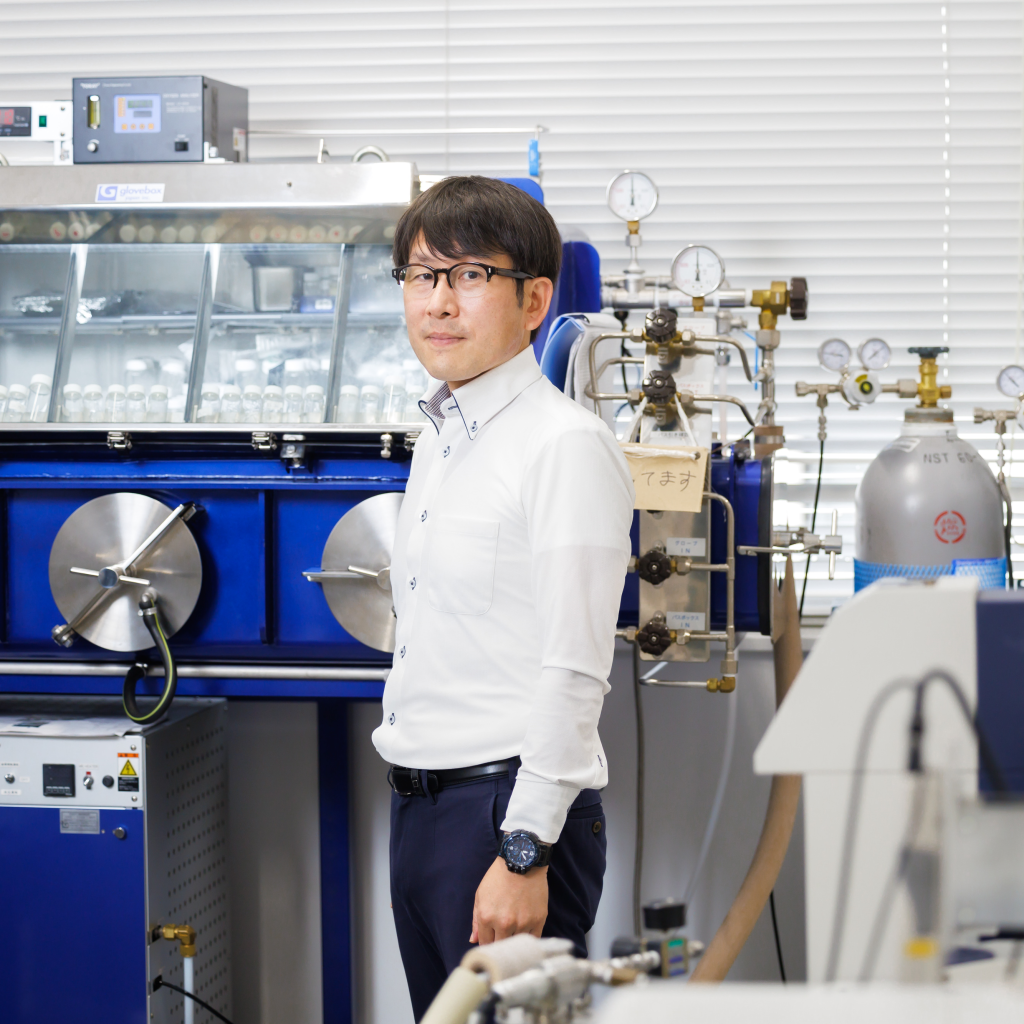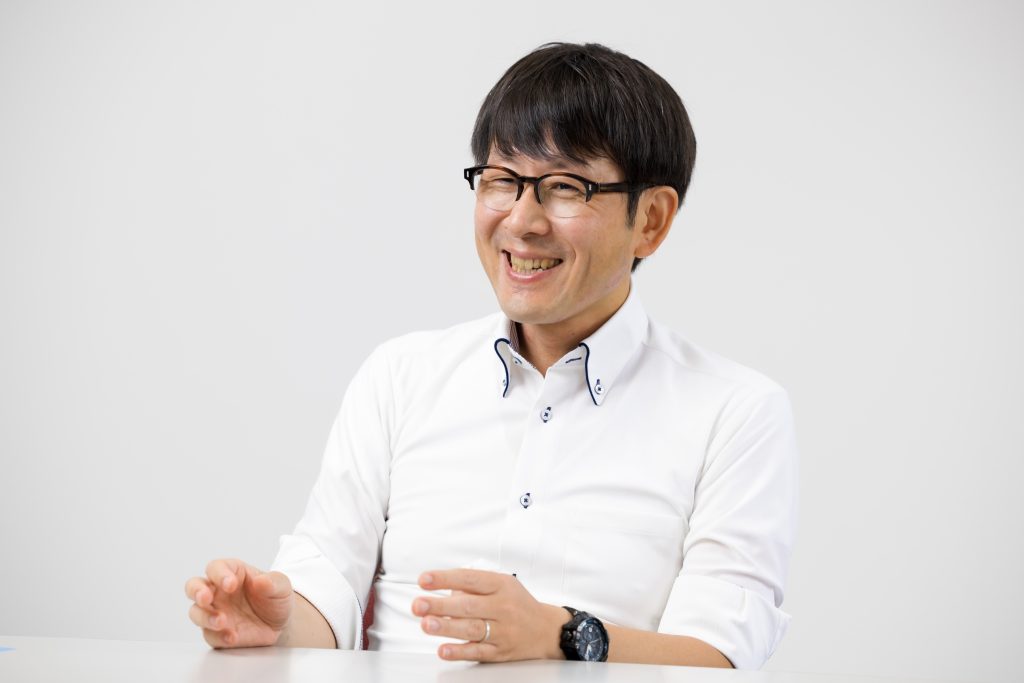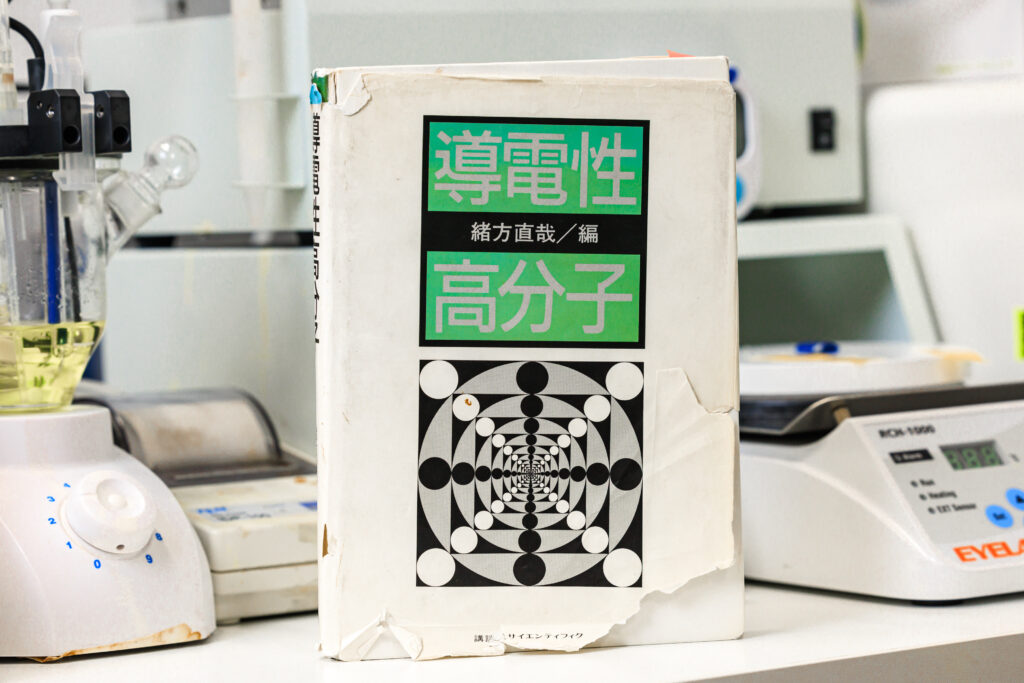
Ionic liquids are chemical materials considered to be friendly to the environment. Professor Masahiro Fujita from the Faculty of Science and Technology uses them to develop next-generation batteries and functional materials based on cellulose. He talks about the significance and appeal of his research.
In recent years, a chemical compound known as ionic liquid is gaining attention in the field of chemical materials. It is a liquid that comprises only cations and anions, and has characteristics not found in common solvents, such as non-volatility even when heated due to strong electrostatic interaction force between ions. My research is on using these ionic liquids to develop new materials that can contribute to the global environment.
I am currently working on developing new materials for batteries used in devices such as smartphones and computers, as well as solvents to dissolve cellulose, a natural polymer. Other research themes include creating medical materials from the extracted cellulose.
Batteries and cellulose are two totally different research fields. However, ionic liquids can be used in these two totally different fields because they comprise organic ions and can therefore be synthesized with molecular designs fitting the purpose. Using this characteristic, it is possible to freely design various types of liquid chemical compounds—you can customize functional liquids to your desired purpose. This is also why ionic liquids are sometimes called “designer solvents” or even “my solvents” by researchers in Europe and the United States.
Anyone with knowledge of organic chemistry can create ionic liquid designs, but whether these designs lead to research depends on the needs of society. In other words, it is important to always keep thinking about what is needed and what can solve existing problems when thinking about molecular structure.
Ionic liquid battery hoped to help mitigate battery fires

Petroleum-derived solvents, which are volatile, are found in the electrolyte solutions of lithium-ion batteries that are currently in widespread use. This means they are inflammable, which leads to smartphones, computers, and other devices catching fire. Safe batteries that do not catch fire easily are required, and there are expectations that batteries using ionic liquids will fill this need. Ionic liquids do not use volatile solvents and can be used as electrolyte solutions as they are. In addition, they do not evaporate even though they are liquids, and have the advantages of not catching fire while allowing repeated use.
I thought about using ionic liquid to dissolve bamboo cellulose when I heard about bamboo invasion from another researcher. Bamboo invasion refers to fast-growing bamboo—grown originally for harvesting bamboo shoots—reproducing like weeds and changing the surrounding ecosystem. As bamboo does not retain moisture as well as other trees and plants, it does not capture rainwater, and landslides occur easily in bamboo forests, another growing concern. If this bamboo can be used to make chemical materials in high demand, bamboo can be depleted rapidly, serving as a measure against bamboo invasion. Furthermore, it can also contribute toward a sustainable society.
Searching for that elusive eureka moment in chemical compound design
The most interesting part of this research is the process of creating new liquid chemical compounds from ionic liquids. As I work, I’m always thinking “When this is completed, it may solve that problem.” The process of creating actual chemical compounds in the laboratory requires repeated prototyping, and so it was a real eureka moment when I successfully created the chemical compound that I wanted.
In the future, I hope to further advance my current research and propose practical applications to society. Especially in the field of batteries, where I am competing with other researchers, I hope to address issues such as leakages and improve quality. Eventually, I hope to contribute toward creating a new battery originating from Japan.
The book I recommend
“Doudensei koubunshi” (Conducting polymers)
by Naoya Ogata, Kodansha Ltd.

When I entered graduate school, I bought this book after a senior at my laboratory told me, “This book is the bible required for your research.” The inside cover is full of signatures as I always ask famous researchers, from both in and outside Japan, for their autographs when I meet them. It has gone beyond being a book to becoming a treasure.
-
Masahiro Fujita
- Professor
Department of Materials and Life Sciences
Faculty of Science and Technology
- Professor
-
Graduated from the Department of Biotechnology, Faculty of Engineering, Tokyo University of Agriculture and Technology and received his Ph.D. in Engineering at the university’s Graduate School of Engineering. Took on several positions—such as postdoctoral researcher at Tokyo University of Agriculture and Technology and Monash University, and associate professor at the Department of Materials and Life Sciences in Sophia University’s Faculty of Science and Technology—before assuming his current position in 2019.
- Department of Materials and Life Sciences
Interviewed: July 2022